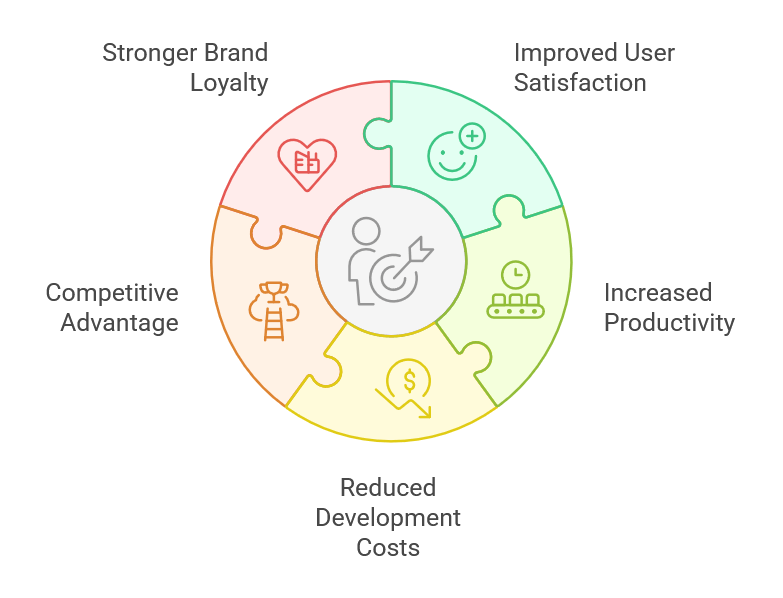In the competitive world of software development, creating solutions that stand out requires more than just technical prowess and robust features. Today, the focus has shifted to designing software that places users at the heart of the process—this is where user-centric design (UCD) comes into play. By prioritizing the needs, preferences, and behaviors of end users, businesses can create intuitive, efficient, and satisfying software experiences that foster loyalty and success.
What is User-Centric Design?
1. Intuitive:
Easy to use and understand, even for non-technical users.
2. Accessible:
Inclusive of diverse user groups, including those with disabilities.
3. Efficient:
Streamlined workflows that save users time and effort.
This methodology involves ongoing user research, testing, and feedback to ensure that the final product aligns with the real-world needs of its audience.
Why Prioritize User-Centric Design?

1. Improved User Satisfaction
Software that is designed with the user in mind is naturally more enjoyable to use. By addressing user pain points and offering solutions that enhance their experience, businesses can ensure higher satisfaction rates. Happy users are more likely to recommend the product and remain loyal customers.
2. Increased Productivity
When software is intuitive and tailored to user workflows, it minimizes the learning curve and reduces errors. This leads to increased efficiency, empowering users to complete tasks quickly and with confidence.
3. Reduced Development Costs
Investing in user-centric design early in the development process can prevent costly rework later. By identifying usability issues and addressing them before launch, businesses save both time and resources while delivering a more refined product.
4. Competitive Advantage
In a crowded market, software that prioritizes user experience (UX) stands out. A seamless, enjoyable experience can be a key differentiator that sets a product apart from competitors.
5. Stronger Brand Loyalty
Users who have positive experiences with software are more likely to trust the brand behind it. This trust fosters loyalty, increases retention, and can lead to long-term business relationships.

How to Implement User-Centric Design
1. Understand Your Users
Conduct user research through surveys, interviews, and analytics to gain insights into their needs, goals, and pain points. Create user personas to represent different segments of your audience.
2. Incorporate Feedback Loops
Engage users throughout the development process by gathering feedback during prototypes, beta testing, and iterative updates. Use their input to refine the design and functionality.
3. Focus on Accessibility
Design with inclusivity in mind. Ensure your software complies with accessibility standards, such as WCAG, to make it usable for people with varying abilities.
4. Invest in Usability Testing
Regularly test your software with real users to identify and resolve usability issues. Focus on ensuring that the software is easy to navigate, responsive, and reliable.
5. Adopt an Agile Approach
The agile methodology pairs well with user-centric design, allowing for continuous improvement based on user feedback and changing requirements.
Conclusion
User-centric design is no longer a luxury—it is a necessity in today’s software landscape. By prioritizing the needs of users, businesses not only create products that resonate but also gain a competitive edge in the market. The investment in understanding and designing for your audience pays off in the form of loyal customers, reduced development costs, and a stronger brand reputation.

